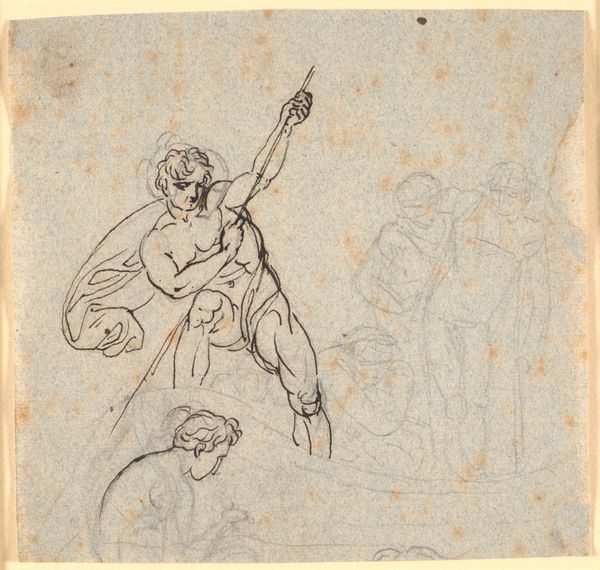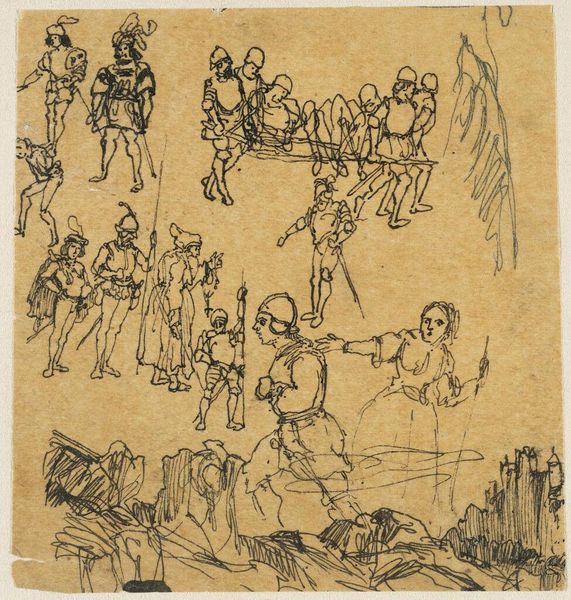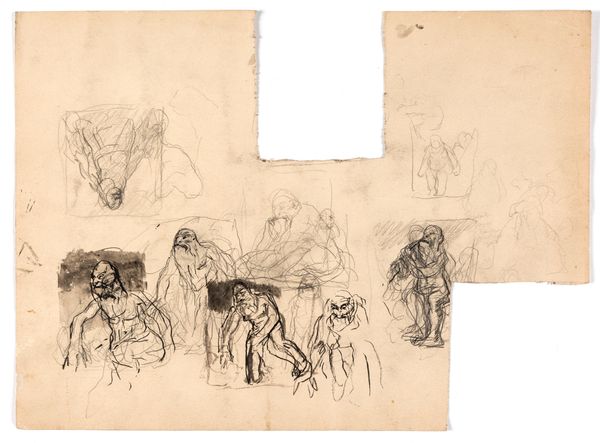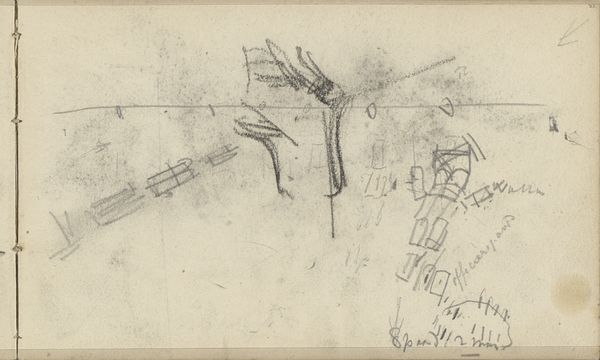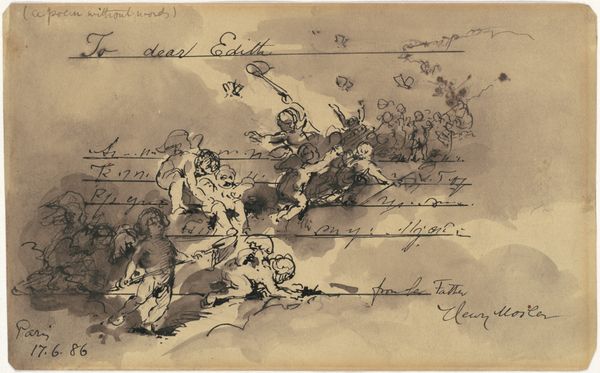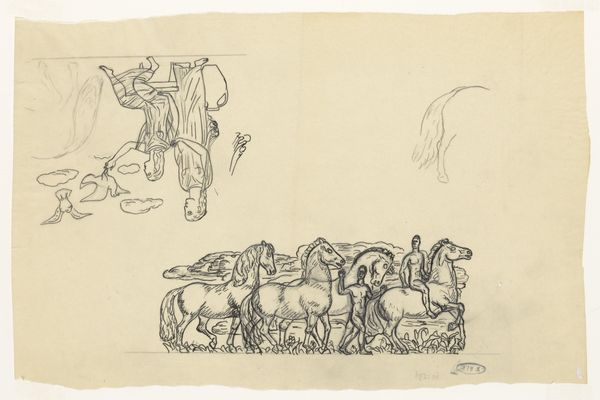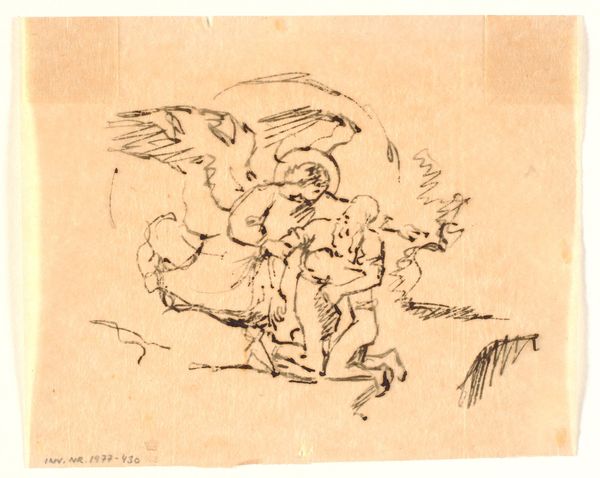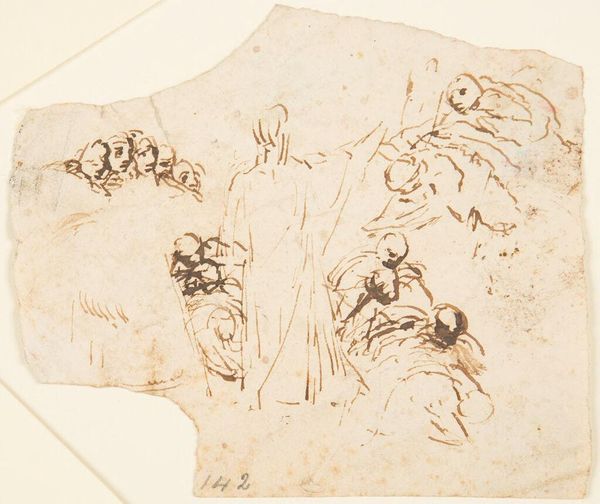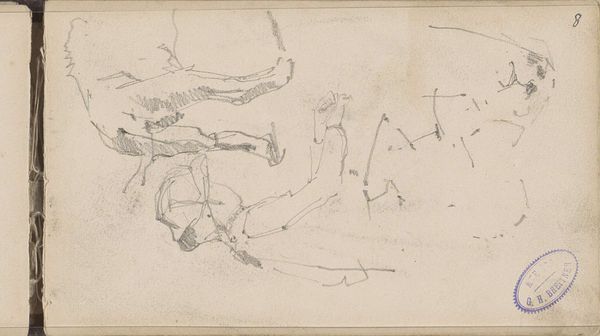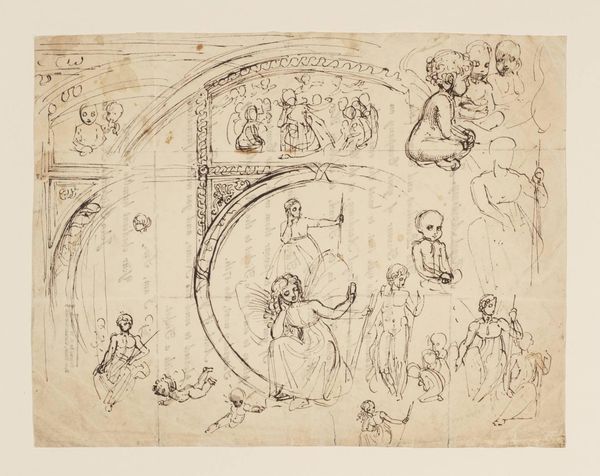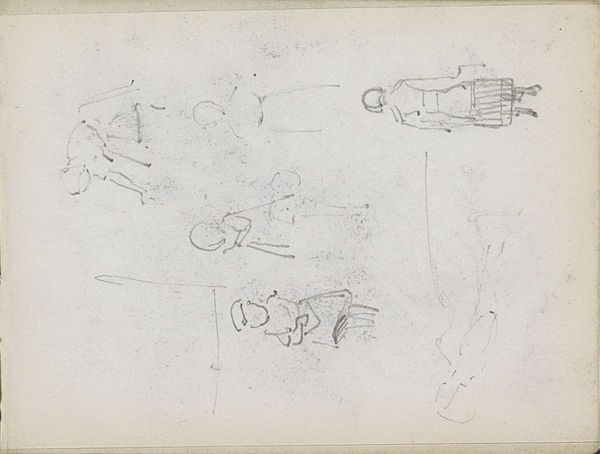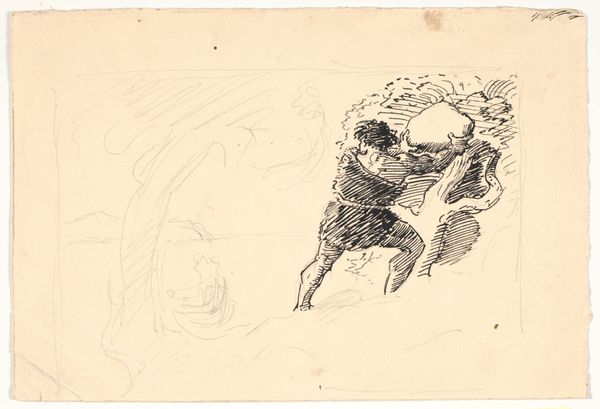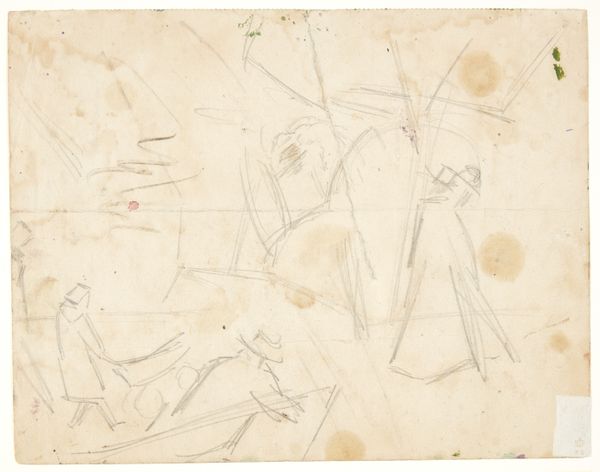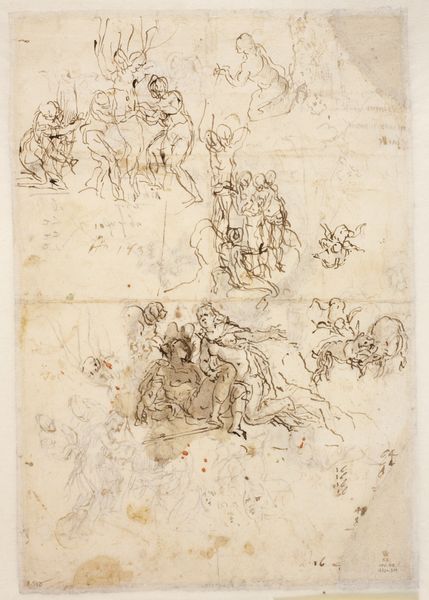
Retfærdighedens triumf. Fire væbnede mænd bærer en båre, med en udstrakt og en siddende figur 1743 - 1809
0:00
0:00
Dimensions: 171 mm (height) x 185 mm (width) (bladmaal)
Editor: This pen and ink drawing, "Retfærdighedens triumf" or "The Triumph of Justice" by Nicolai Abildgaard, made between 1743 and 1809, feels… unfinished. Raw, even. It depicts figures carrying someone on a stretcher, but there are other sketches around the main scene. What do you see in this piece? Curator: I see a fascinating document of artistic labor. Note the type of paper used – likely cheap, easily accessible. This wasn't precious art-making, but a workspace for generating ideas. The visible pen strokes reveal Abildgaard’s process. He’s not aiming for perfection, but rather exploring different iterations. This challenges a notion of the artwork as purely aesthetic, inviting a closer inspection of its manufacture. Editor: So you're less interested in the subject matter – the "triumph of justice" – and more interested in how it was physically created? Curator: Precisely. Justice, after all, is an abstract concept, often tied to powerful institutions. Here, Abildgaard uses relatively inexpensive materials to explore these concepts. Notice also the inscription at the top corner and near the bottom of the paper, presumably using relatively inexpensive ink made readily available through manufacture during this time period. We see, literally, the hand of the artist. We’re looking at a kind of commodity itself, raw artistic thought made material, however preliminary. It allows us to ask, whose justice is being represented, and under what economic conditions? Editor: That's interesting. I hadn't thought about it that way. Seeing it as a kind of record of labour makes the drawing feel more immediate, less… distant. Curator: Exactly. Consider the context: late 18th century. Shifts in manufacturing and the rise of a market for art are changing how artists work and are perceived. This sketch, through its very materiality, provides insight into that complex relationship. Editor: I see. I’m now thinking of the economic landscape impacting the means of artistic production at this time. Thank you for the materialist interpretation!
Comments
No comments
Be the first to comment and join the conversation on the ultimate creative platform.
